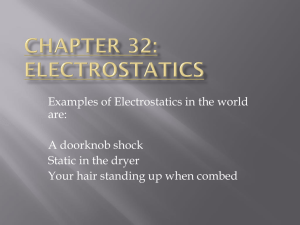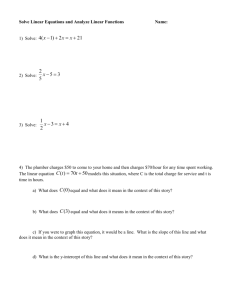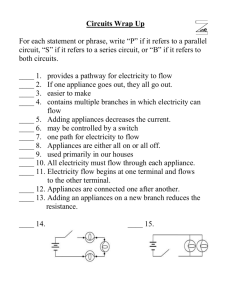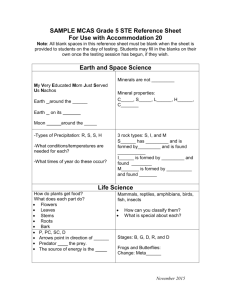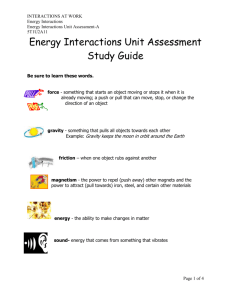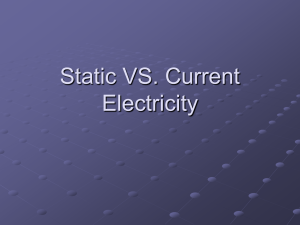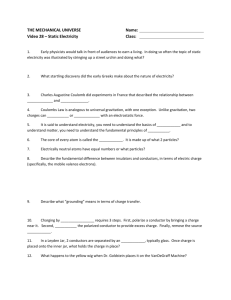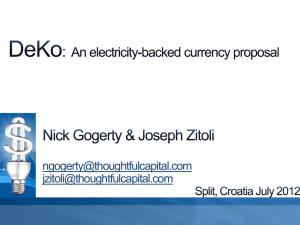Electricity & Magnetism Content from the Frameworks
advertisement
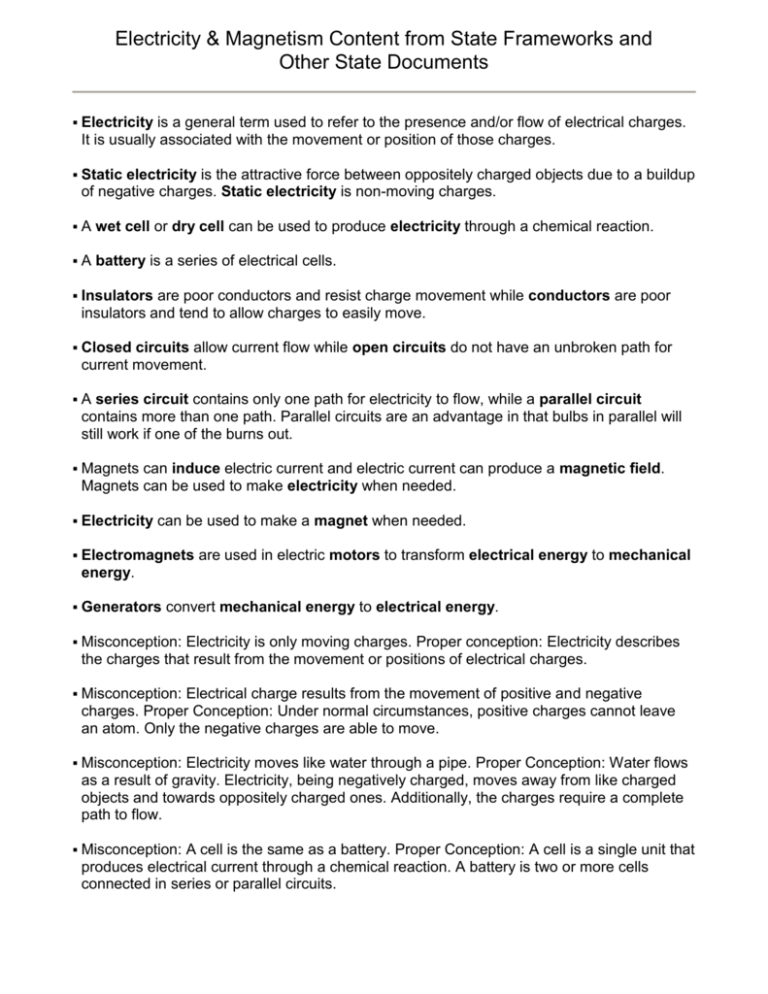
Electricity & Magnetism Content from State Frameworks and Other State Documents Electricity is a general term used to refer to the presence and/or flow of electrical charges. It is usually associated with the movement or position of those charges. Static electricity is the attractive force between oppositely charged objects due to a buildup of negative charges. Static electricity is non-moving charges. A wet cell or dry cell can be used to produce electricity through a chemical reaction. A battery is a series of electrical cells. Insulators are poor conductors and resist charge movement while conductors are poor insulators and tend to allow charges to easily move. Closed circuits allow current flow while open circuits do not have an unbroken path for current movement. A series circuit contains only one path for electricity to flow, while a parallel circuit contains more than one path. Parallel circuits are an advantage in that bulbs in parallel will still work if one of the burns out. Magnets can induce electric current and electric current can produce a magnetic field. Magnets can be used to make electricity when needed. Electricity can be used to make a magnet when needed. Electromagnets are used in electric motors to transform electrical energy to mechanical energy. Generators convert mechanical energy to electrical energy. Misconception: Electricity is only moving charges. Proper conception: Electricity describes the charges that result from the movement or positions of electrical charges. Misconception: Electrical charge results from the movement of positive and negative charges. Proper Conception: Under normal circumstances, positive charges cannot leave an atom. Only the negative charges are able to move. Misconception: Electricity moves like water through a pipe. Proper Conception: Water flows as a result of gravity. Electricity, being negatively charged, moves away from like charged objects and towards oppositely charged ones. Additionally, the charges require a complete path to flow. Misconception: A cell is the same as a battery. Proper Conception: A cell is a single unit that produces electrical current through a chemical reaction. A battery is two or more cells connected in series or parallel circuits. Electricity & Magnetism Content from State Frameworks and Other State Documents Misconception: Batteries store electricity. Proper Conception: A cell or battery may produce electricity from chemicals contained within. Some contain chemical processes that are reversible by recharging them. Misconception: Wire must be coiled to produce a magnetic field. Proper Conception: Any wire carrying an electric current generates a magnetic field. Coiling the wire increases the field to allow it to be more easily detected. Misconception: Wire must be coiled around and iron core to produce a magnet. Proper Conception: Coiled wire, or any wire carrying an electric current produces a magnetic field. Adding an iron core strengthens and focuses the field. Misconception: Batteries have electricity inside them. Proper Conception: Batteries contain chemicals that undergo reactions to “pump” charges through a conductor. The flow of charges is the electric current. Batteries “die” when they run out of electricity. Proper Conception: Batteries do not contain electricity. They contain chemicals that undergo reactions. When the chemicals react and the fuel is used up, the battery runs down. Misconception: Misconception: Larger batteries have more electricity. Proper Conception: Battery volume does not necessarily indicate more voltage. However, larger batteries have more chemicals that can cause the reaction to last longer and produce more current over time. Like charges repel while opposite charges attract. Insulators resist the movement of charges while conductors allow charges to move easily. Closed circuits allow current to flow while open circuits have a broken path preventing the movement of charges. All matter is composed of positive and negative particles. The movement of the charges created by these particles is what we call an electric current. Series and parallel circuits can be used to control the amount of electric energy produced. Electric forces arise from the presence of an unbalance in electric charge. An electric circuit allows electrons to flow from a negative pole (excess electrons) to a positive pole (deficient in electrons). A In circuit is a closed loop through which an electrical current can pass. a series circuit there is only one path of electricity. In a parallel circuit there is more than one path of electricity.
